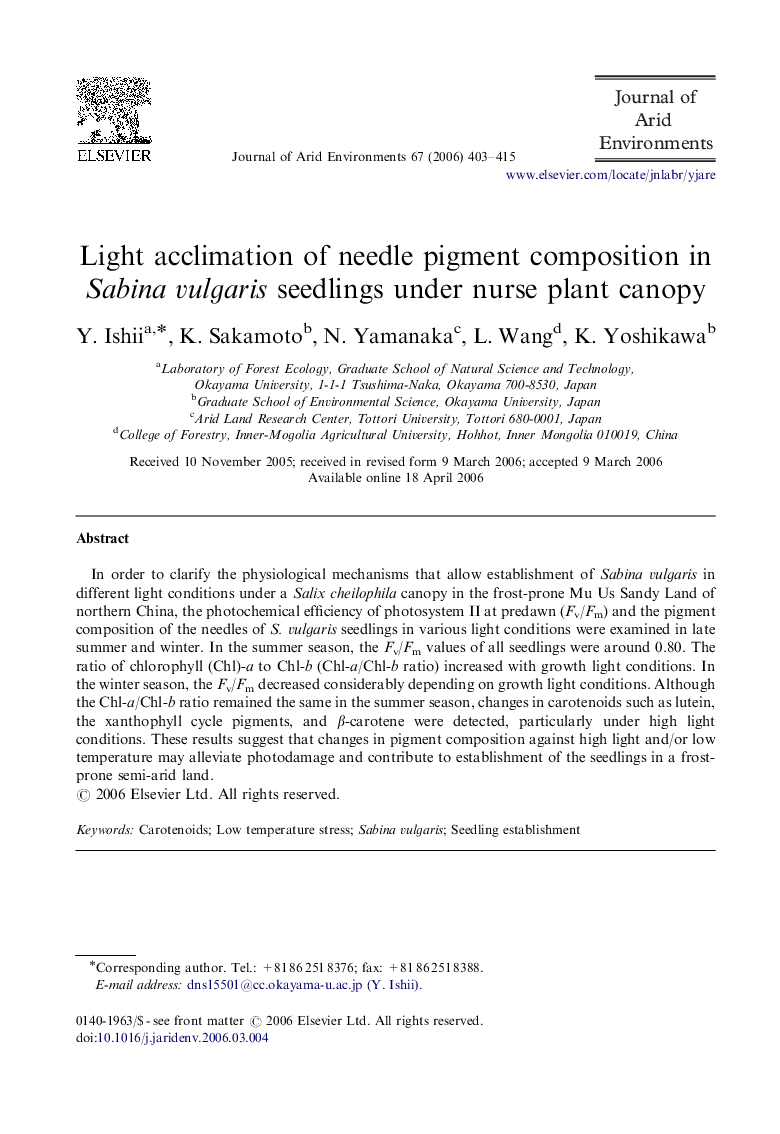| Article ID | Journal | Published Year | Pages | File Type |
|---|---|---|---|---|
| 4394575 | Journal of Arid Environments | 2006 | 13 Pages |
In order to clarify the physiological mechanisms that allow establishment of Sabina vulgaris in different light conditions under a Salix cheilophila canopy in the frost-prone Mu Us Sandy Land of northern China, the photochemical efficiency of photosystem II at predawn (Fv/Fm) and the pigment composition of the needles of S. vulgaris seedlings in various light conditions were examined in late summer and winter. In the summer season, the Fv/Fm values of all seedlings were around 0.80. The ratio of chlorophyll (Chl)-a to Chl-b (Chl-a/Chl-b ratio) increased with growth light conditions. In the winter season, the Fv/Fm decreased considerably depending on growth light conditions. Although the Chl-a/Chl-b ratio remained the same in the summer season, changes in carotenoids such as lutein, the xanthophyll cycle pigments, and β-carotene were detected, particularly under high light conditions. These results suggest that changes in pigment composition against high light and/or low temperature may alleviate photodamage and contribute to establishment of the seedlings in a frost-prone semi-arid land.
